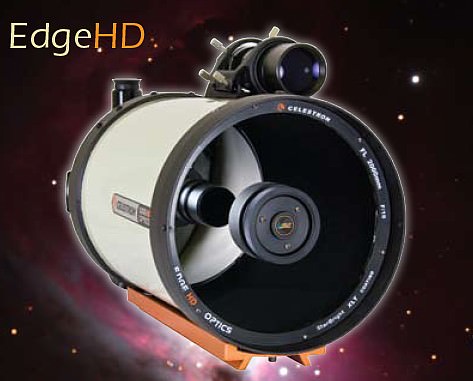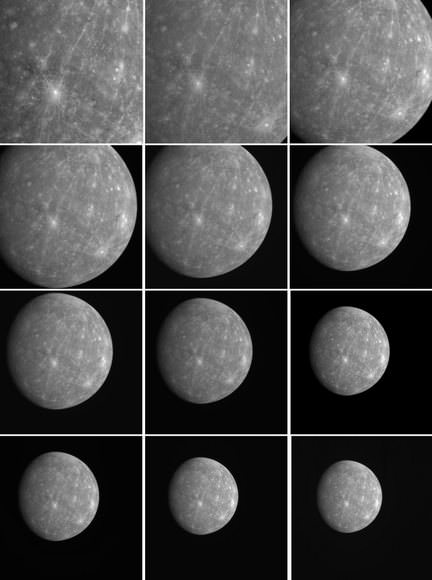Solar Cycle Triggers La Nina, El Nino-like Climate Shifts

Credit: National Center for Atmospheric Research
Researchers have discovered a link between the 11-year solar cycle and tropical Pacific weather patterns that resemble La Niña and El Niño events.
When it comes to influencing Earth's climate, the Sun's variability pales in recent decades compared to greehouse gases – but the new research shows it still plays a distinguishable part.
(...)
Read the rest of Solar Cycle Triggers La Nina, El Nino-like Climate Shifts (653 words)
NASA Science News for July 17, 2009
NASA's Lunar Reconnaissance Orbiter has returned its first imagery of Apollo landing sites. The pictures show lunar module descent stages, scientific instruments and even 40-year-old foot trails made by astronauts walking across the dusty lunar surface.
FULL STORY at
http://science.nasa.gov/headlines/y2009/17jul_lroc.htm?list1035898
NASA Science News for July 17, 2009
Forty years ago, Apollo astronauts set out on a daring adventure to explore the Moon. They ended up discovering their own planet.
FULL STORY at
http://science.nasa.gov/headlines/y2009/17jul_discoveringearth.htm?list1035898
For more information about space and space exploration, visit our Home page: http://science.nasa.gov
The Eagle Has … Arrived
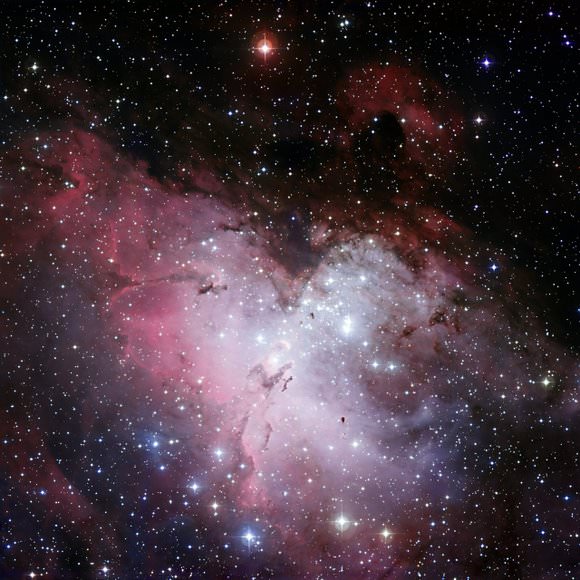
Eagle Nebula, courtesy of the European Southern Observatory
We're still a few days out from the 40th anniversary of the touchdown of Apollo 11's lunar lander, the Eagle. (The launch went off 40 years and just an hour or so ago.)
Presumably to hold us over, the European Southern Observatory (ESO) has released this stunning new image of the Eagle Nebula.
(...)
Read the rest of The Eagle Has … Arrived (389 words)
A High Definition Telescope? Yeah… The Celestron EdgeHD!
In this new generation of everything high def – from computer screen to televisions – is it possible to create a high definition telescope? The answer is yes… And the designer is Celestron. As always, I keep my eyes and ears open when it comes to the latest in astronomy equipment. While I've seen a lot of things come and go over the years (including other Ritchey-Chretien and astrograph knock-offs), the Celestron EdgeHD is a design that I think really deserves a closer look… (...)
Read the rest of A High Definition Telescope? Yeah… The Celestron EdgeHD! (1,116 words)
Moon For All Mankind
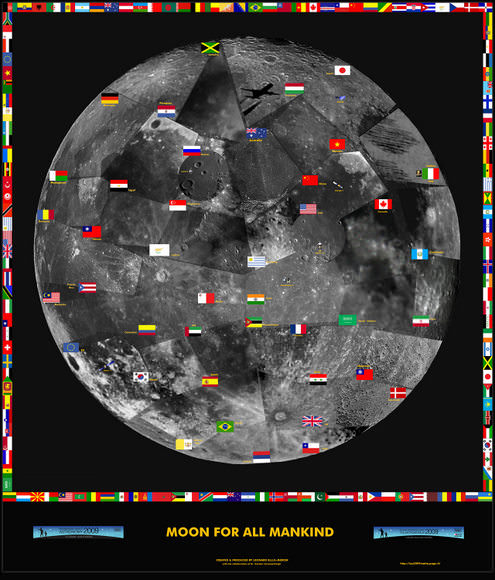
IYA2009/IYA2009 Malta
The archipelago of Malta has coordinated a global campaign to take images of sections of the Moon’s surface as seen from 40 countries, and combine them in this commemorative, symbolic whole called the “Moon for All Mankind.”
The composite was released today, which marks the 40th anniversary of the Apollo 11 launch. Monday will be the anniversary of the landing.
Update: The Malta IYA Committee wrote to share this link with UT readers — a really fascinating animation they created. Check it out!
(...)
Read the rest of Moon For All Mankind (307 words)
Mercury's Craters Get Artsy New Names
The MESSENGER mission has been revealing more of Mercury's surface, including plenty of craters so interesting that geologists have been christening them with names.
The International Astronomical Union released new names for 16 impact craters this week. All of the craters were discovered during the flyby in October, which is also when MESSENGER snapped these images–five minutes apart–as it left.(...)
Read the rest of Mercury's Craters Get Artsy New Names (574 words)
Ejected Black Holes Drag Clusters of Stars With Them

The tight cluster of stars surrounding a supermassive black hole after it has been violently kicked out of a galaxy represents a new kind of astronomical object which may provide telltale clues to how the ejection event occurred. “Hypercompact stellar systems” result when a supermassive black hole is violently ejected from a galaxy, following a merger with another supermassive black hole. The evicted black hole rips stars from the galaxy as it is thrown out. The stars closest to the black hole move in tandem with the massive object and become a permanent record of the velocity at which the kick occurred.
(...)
Read the rest of Ejected Black Holes Drag Clusters of Stars With Them (479 words)
NASA Science News for July 15, 2009
Why couldn't Neil Armstrong fall asleep on the Moon? The answer is revealed in today's suspenseful story from Science@NASA.
FULL STORY at
http://science.nasa.gov/headlines/y2009/16jul_wideawake.htm?list1035898
Welcome "Copernicium," Our Newest Element
The newest element on the periodic table will likely be named in honor of scientist and astronomer Nicolaus Copernicus. Element 112 will be named Copernicum, with the element symbol "Cp."
"We would like to honor an outstanding scientist, who changed our view of the world", says Sigurd Hofmann, head of the team who discovered the element.
(...)
Read the rest of Welcome "Copernicium," Our Newest Element (299 words)
Spirit's Psychedelic Visions
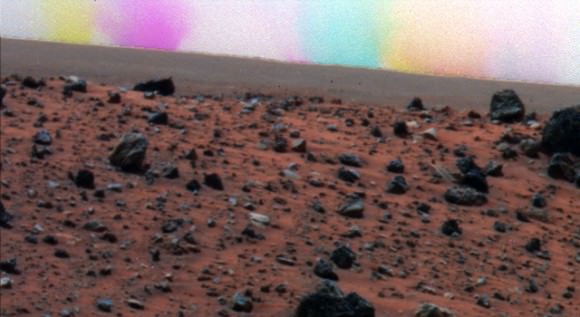
The Spirit rover has had memory problems, arthritic-like symptoms in her wheels, as well as her current dilemma of being stuck in loose Martian soil. But now, is she having psychedelic visions, too?! No, not to worry; she's not having hallucinations or smoking any mind-altering Martian weed. This image is just a combination of three images taken seconds apart through different colored filters to create a special-effects portrait of a huge, moving dust devil on Mars. It shows the dust devil in different colors, according to where it was on the horizon when each exposure was taken.
(...)
Read the rest of Spirit's Psychedelic Visions (234 words)
Astro 'Shop of the Week
We've got some extremely creative readers of Universe Today who really know their way around image editing software. One of those people is Alan Lipkin, who submitted his latest Photoshop handiwork to us, which he calls "Ballerina Galactica." Of course, you'll recognize the tutu as the Sombrero Galaxy and the backdrop as the Wild Duck Star Cluster. The big star and earring are both Sirius. Wonderful!
Alan's image gave me an idea: Why not have a regular feature where readers can submit astronomical images they have messed around with using image editing software? A few rules: the images submitted must be space or astronomy related and they must be in good taste. The images can be submitted to Nancy here. We're looking forward to seeing and sharing the creative side of our readers!
Shuttle is Go For Launch, But is the Weather?
With the fuel leak apparently fixed, space shuttle Endeavour is '"go" for launch for the STS-127 mission. But the weather could force another delay. Forecasters predict a 60 percent chance thunderstorms on Saturday evening at Kennedy Space Center, and Endeavour's launch is scheduled for 7:39:35 p.m. EDT. "Bottom line from the team, everybody's go for launch, we have no major issues at all," said Mike Moses, director of shuttle launch integration at the Kennedy Space Center. "We're in really good shape for launch. We do have some challenges with the weather, but we'll just work through those."
(...)
Read the rest of Shuttle is Go For Launch, But is the Weather? (116 words)
Herschel Telescope First Light Images Released
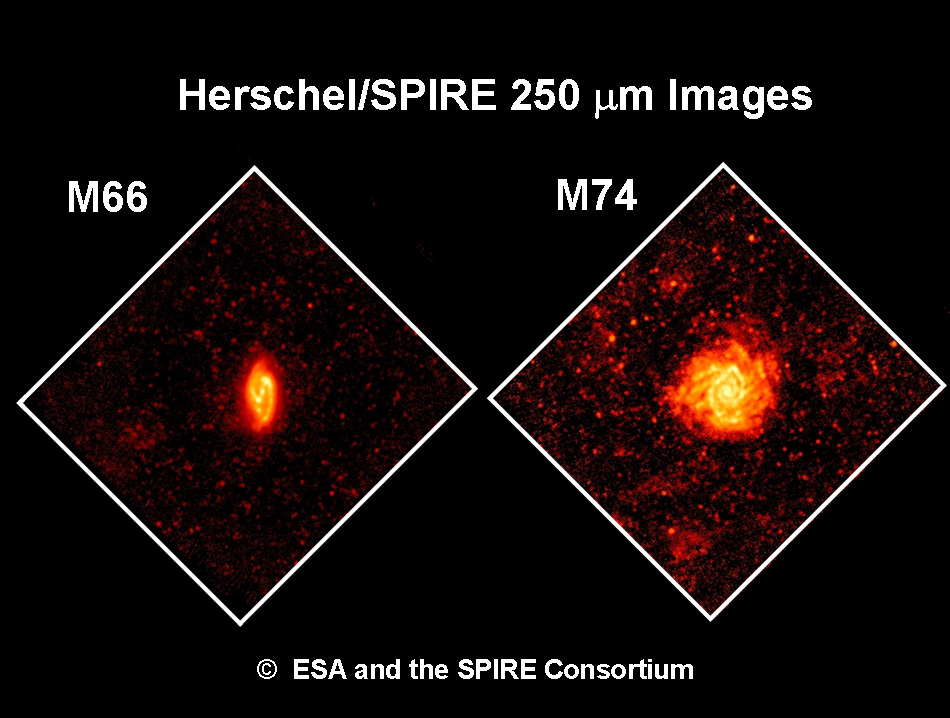
Herschel "first light" images of M66 and M74. Credits: ESA and the SPIRE Consortium
The Herschel telescope has now turned on all its instruments, taking a few "first light" images with each instrument of galaxies, star-forming regions and dying stars. Herschel astronomers said they were "staggered" by the results, saying "these observations show that Herschel’s instruments are working beyond expectations. They promise a mission of rich discoveries for waiting astronomers." Above are images taken with Herschel’s Spectral and Photometric Imaging Receiver (SPIRE, of two galaxies, M66 and M74. The galaxies showed up prominently, providing astronomers with their best images yet at these wavelengths. And what's that in the background? Other more distant galaxies!
(...)
Read the rest of Herschel Telescope First Light Images Released (435 words)
Explore Tranquility Base With New Interactive Apollo 11 Feature
Where were you on July 20, 1969? If you don't remember or weren't born yet you can re-live the first walk on the Moon with a new interactive feature on NASA's website. Listen to the audio, pan and explore the landing site, and go inside the Eagle lunar lander (not a lot of room in there!). Looking around Tranquility Base with the pan feature is a little counter-intuitive (opposite of what you do on Google Maps) but fun, nonetheless.
Look for lots of other fun ways to celebrate the 40th anniversary of Apollo 11 during the next couple of weeks. Google and NASA announced they will be unveiling something exciting on July 20, and word on the street is that it will be Google Moon in 3-D, made possible in part by the newly arrived Lunar Reconnaissance Orbiter.
